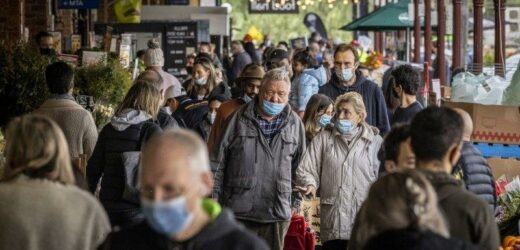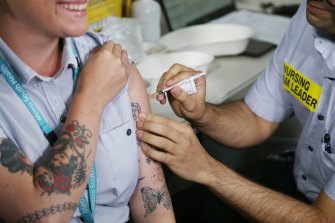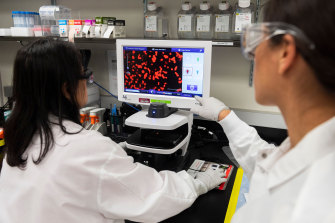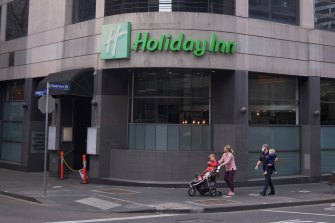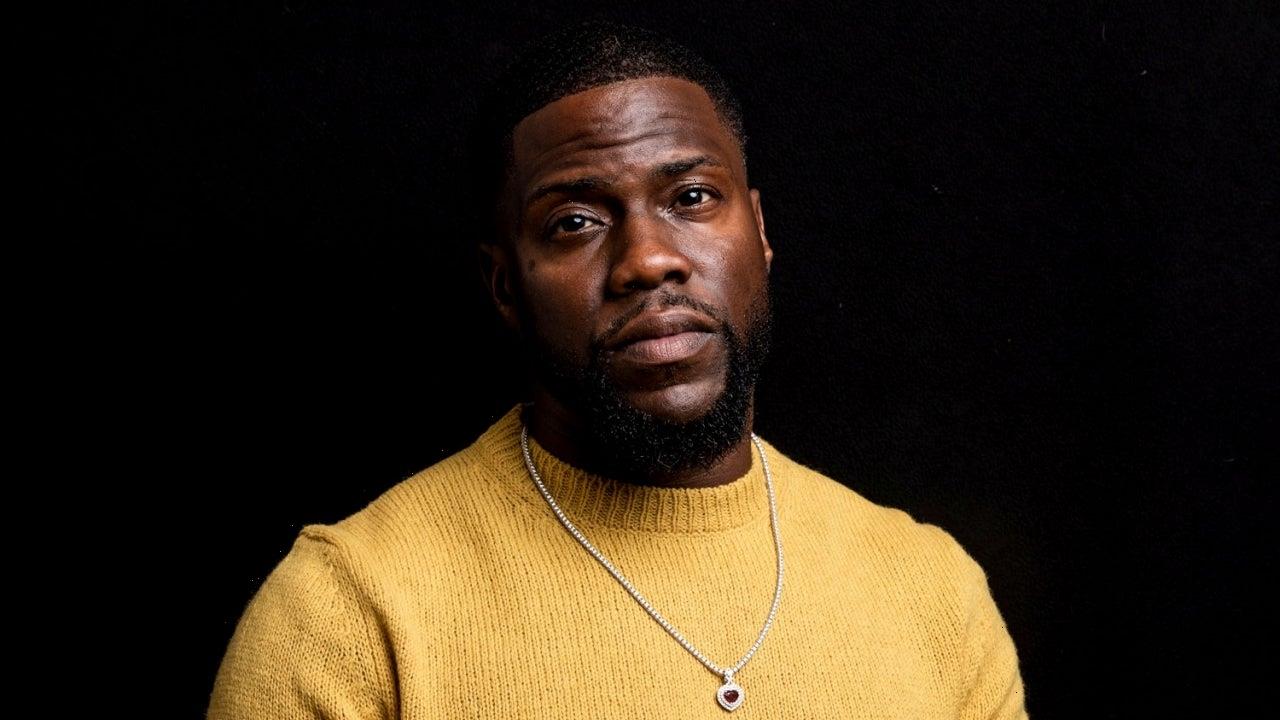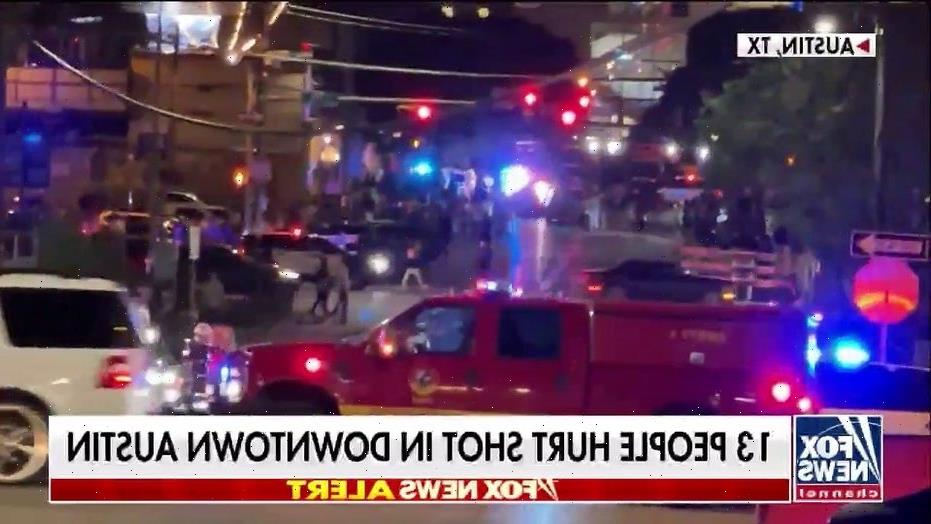We have made our live blog of the coronavirus pandemic free for all readers. Please consider supporting our journalism with a subscription.
1 of 1
Pfizer for GPs, Moderna for rural clinics and pharmacies in plan for vaccine ramp-up
More than 4400 general practices will be able to administer the Pfizer vaccine while another 850 rural and regional clinics and 1000 pharmacies will deliver Moderna injections from October as the vaccine rollout sprints to the end of the year.
Doctors will also be paid to make home visits to vaccinate the frail and elderly who cannot visit clinics to get immunised and ensure people moving into aged care facilities do not miss out.
From October more than 4400 GPs will be able to deliver Pfizer while another 850 GPs and 1000 pharmacies will deliver Moderna injections.Credit:Fairfax Media
The Commonwealth has also started writing to all Australians over the age of 70, thanking those who have already been vaccinated and urging the rest to book in for their shots.
So far, more than 5 million people have now had at least one dose of a vaccine, including 61 per cent of Australians aged over 70.
Health Minister Greg Hunt said the vaccination rate was good but could be better.
“We want to continue to encourage more people of every age group, but particularly the over 70s to come forward,” he said on Monday. “The older you are, the higher the risk, it’s as simple as that with COVID.”
All Australians over the age of 40 are now eligible for vaccination, and already a number of Commonwealth-run vaccination clinics have started administering Pfizer.
A large Novavax study shows the COVID-19 vaccine has high overall efficacy.Credit:Andrew Caballero – Getty
While demand for COVID-19 shots in the US has dropped off dramatically, the need for more vaccines around the world remains critical. The Novavax vaccine, which is easy to store and transport, is expected to play an important role in boosting vaccine supplies in the developing world.
That help is still months away, however. The company says it plans to seek authorisation for the shots in the US, Europe and elsewhere, including Australia, by the end of September and be able to produce up to 100 million doses a month by then.
The Australian government has ordered 51 million doses of Novavax’s product. In May, the company outlined plans to make doses of its coronavirus vaccine in Australia after revealing it is searching for a manufacturing partner to produce its protein-based jab onshore.
The US company’s plans to explore setting up shop in Australia come one week after fellow US biotech Moderna said it was in talks with the federal government about local manufacturing opportunities.
“Many of our first doses will go to … low- and middle-income countries, and that was the goal to begin with,” Novavax chief executive Stanley Erck said.
While more than half of the US population has had at least one COVID-19 vaccine dose, less than 1 per cent of people in the developing world have had one shot, Our World In Data has said.
Novavax’s study involved nearly 30,000 people aged 18 and over in the US and Mexico. Two-thirds received two doses of the vaccine, three weeks apart, and the rest got dummy shots.
Read more: Novavax COVID-19 shot shows 90 per cent efficacy, large study finds
Source of Melbourne’s highly infectious Delta outbreak set to remain mystery
Victoria’s Deputy Chief Health Officer Allen Cheng says it is unlikely to ever be known how the highly infectious Delta variant of coronavirus leaked out of Victoria’s quarantine system and seeded an outbreak in Melbourne.
Professor Cheng told The Age on Monday the state’s health officials had exhausted every avenue in their four working theories probing how the Delta variant crept into Melbourne unchecked, sparking a cluster that has so far infected at least 15 people, including several children.
The Holiday Inn on Flinders Lane.Credit:Luis Ascui
They found no evidence the contagious variant, which first emerged in Melbourne on June 4, had spread among quarantine workers, hotel staff or guests. There was also no indication there had been any breach of infection control measures in Victoria’s hotel quarantine system.
“We have been through everyone and we can’t identify anyone else who has been infected or determine what exactly occurred,” Professor Cheng said. “Obviously, now it is getting to be many weeks after it might have happened, so I don’t think it is likely we are ever going to be able to find out how it happened now.”
Last week, genomic sequencing identified a link between a returned traveller who entered Victoria’s hotel quarantine on May 8 and one of the families infected in what has now been dubbed the West Melbourne cluster, where the Delta variant of the virus sent at least 300 people linked to the North Melbourne Primary School into isolation.
But how the virus was linked between the two cases remains a mystery.
Read more: Source of Melbourne’s highly infectious Delta outbreak set to remain mystery
Good morning
Good morning, and welcome back to our coronavirus blog after the long weekend.
It wasn’t the sort of long weekend I think we were all hoping for – especially for Melburnians moving within 25 kilometres of home – but I hope you all had a chance to relax and enjoy the break anyway.
Anyway, now that we’re back at it we’ll be covering all the COVID-19 latest. For all other news, including the latest on the Tamil family that will be reunited on mainland Australia, according to Treasurer Josh Frydenberg, my colleague Broede Carmody is helming the national news blog.
Thanks for joining us.
1 of 1
Most Viewed in National
Source: Read Full Article
